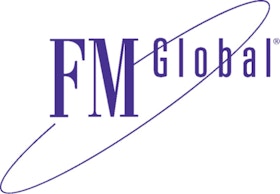New for 2022: Interactive climate risk and ESG filters to enable better understanding of country-inherent risks linked to corporate board priorities
For companies seeking to grow and expand around the world responsibly and serve new customers and communities, the online 2022 FM Global Resilience Index, has just been released and enhanced. It now includes 15 economic, risk quality, and supply chain measures that offer executives insights into the vulnerabilities of a country’s business environment and, conversely, its resilience.
The interactive web tool enables decision-makers to find, slice, dice, and compare objective data about 130 countries and territories to inform strategic decisions as they site new facilities, evaluate their supply chains, assess their business risk around the world, and perform due diligence for mergers and acquisitions.
Climate risk, ESG-related enhancements
Two new index measures for 2022, climate risk exposure and climate risk quality, help businesses intensify their focus on emerging environmental perils. The former measure reflects such threats as severe floods and wind storms, while the latter reflects building codes, code enforcement, and facilities improvements.
Notably, the Republic of Korea’s climate risk quality rose in rank for this measure since last year, climbing 36 places, from 89 to 53, as the country demonstrated its commitment by releasing national flood maps in 2021. The Resilience Index also indicates countries which are relatively better able than others to address climate-related risks such as the United Kingdom. While ranked 111th for climate risk exposure, the UK sits in 17th place for climate risk quality this year.
Conversely, as businesses struggle to manage supply chain strains, this year’s index reveals manufacturing nations that rank low for both climate risk exposure and climate risk quality including China region 1 (East) and region 2 (Southwest and some coastal locations), India and Vietnam.
“Southeast Asian countries tend to rank lower for Climate Risk Exposure due to the region’s exposure to wind and flood,” said Tan Hian Hong, vice president, division underwriting manager, Asia operations, FM Global. “This is attributable to a combination of factors including the location of metropolitan centres near coastlines and at sea level, as well as urban development and infrastructure located in flood-prone locations.”
However, despite Singapore’s Climate Risk Exposure, for which it ranks 52, the Resilience Index indicates the country is relatively better prepared to address climate-related risk compared to most other countries in Southeast Asia, as seen by its Climate Risk Quality for which it ranks 32nd this year.
“Singapore has a clearly articulated vision and strategy to tackle climate risks, including policies to manage increased risk of storm surge and severe flooding due to rising sea levels,” Tan added.
“The country has made notable efforts to protect buildings and infrastructure from flooding, while the climate risk quality rankings of other Southeast Asian countries show there is room for them to improve building codes and policies to adapt to a changing climate. This demonstrates how important it is for companies with regional operations to have a complete picture of their combined exposure to climate risk,” said Tan.
With stakeholder demands on companies increasing, the 2022 Resilience Index now includes country filters that present specific index data related directly to businesses’ climate risk and Environmental, Social and Governance (ESG) interests, as organisations strive to become more transparent in their commitments and values.
The two filters enable index users to focus exclusively on the climate risk- and ESG-related measures within the Resilience Index to better understand inherent country risks and identify opportunities through these lenses.
Additionally, in recognition of the impact of pandemic risk, the 2022 Resilience Index includes two new measures: health expenditure and supply chain timeliness. Also, due to the availability of better-quality data, the Resilience Index now contains improved measures for cyber risk and energy intensity, a more comprehensive measure for 2022, broadened from fossil fuels to now include renewable and clean energy sources.
“Building resilience to achieve long-term sustainable outcomes is critical to business success, whether adjusting to war, navigating a pandemic, dealing with the threat of a changing climate, or meeting ESG demands,” said Pentti Tofte, staff senior vice president, data analytics, FM Global. “The 2022 FM Global Resilience Index is designed to support senior executives with preparing for—and adapting to—a dynamic risk landscape and building business resilience responsibly.”
Helping businesses build resilience against disruptive events
The Resilience Index sees nearly 20,000 visits per year from global business leaders from numerous sectors including chemicals, education, forest products, healthcare, mining, molten materials, pharma/biotech, power generation, governments, and semiconductors. A number of global companies have integrated the index into their executive dashboards as well.
About FM Global
Established nearly two centuries ago, and present in the Asia Pacific region for 50 years, FM Global is a mutual insurance company whose capital, scientific research capability and engineering expertise are solely dedicated to property risk management and the resilience of its client-owners. These owners, who share the belief that the majority of property loss is preventable, represent many of the world’s largest organisations, including one of every three Fortune 500 companies. They work with FM Global to better understand the hazards that can impact their business continuity in order to make cost-effective risk management decisions, combining property loss prevention with insurance protection.
Additional Resilience Index Resources
Publish your content with EB Publishing
It's about who you reach. Get your news, events, jobs and thought leadership seen by those who matter to you.











